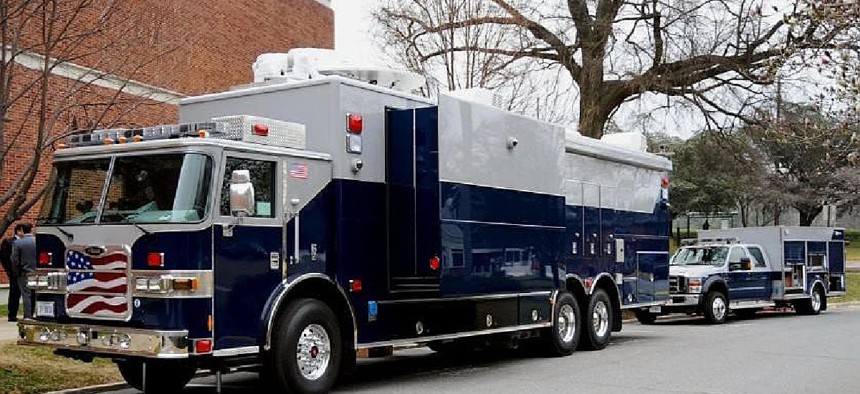Pentagon’s roving intel center helps emergency responders

The Domestic Mobile Integrated Geospatial-Intelligence System can discern the location of critical infrastructure. National Geospatial-Intelligence Agency
When civilian officials call, Defense dispatches mobile geospatial data center packed with communications gear, mapping equipment and analysts.
When street signs fall and cell towers fail, the Pentagon is ready to dispatch a high-tech command center with digital mapmaking gear for federal emergency responders arriving in unfamiliar hurricane-ravaged regions.
In response to a civilian agency’s request, the Defense Department’s Domestic Mobile Integrated Geospatial-Intelligence System, or DMIGS, can discern the location of critical infrastructure. The 44-foot long vehicle is built like a fire truck and contains technology similar to the computers and communications available at the National Geospatial-Intelligence Agency headquarters.
data centerAt the scene of a disaster, up to six analysts aboard the DMIGS consult the Homeland Security Infrastructure Program, or HSIP—a repository of about 500 layers of mapped-out features, including power plants, rivers and roads.
Throughout past storms, when wireless devices were working, federal officials used similar HSIP-base apps. “During Hurricane Irene, when search-and-rescue teams were deploying, they were able to have all the map data that normally they would need huge paper atlases to see,” Dan Cotter, then Homeland Security Department chief technology officer told Government Executive Media Group in June. The DMIGS also was deployed during the August 2011 storm.



